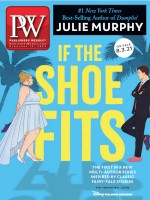Photographer Nelson tells the love story of two Black London artists in his debut novel, Open Water (Black Cat, Apr.).
What made you want to write a novel?
This is a love story, and it is also an ode to the places that have formed a lot of who I am and the art that provided me with solace in times of loss and joy. With photography and music, there’s something sensual in that kind of work. You can look at a photo and have an immediate reaction, or you can hear music and feel something. I was trying to transcribe that kind of sensuality toward literature.
Art in general almost becomes a third character to accompany your two leads. How did you decide which art to reference in the story?
The references helped me map emotions and elevate them to a different level. There is an early section where the [main characters] meet at a bar and there’s a description of music being played. That was something that elevated that scene. Photography and fine art references were used to emphasize this idea of seeing someone and not looking at them, which was a refrain I used throughout the book. I wanted to highlight that distinction of seeing someone as a whole and for how they want to be seen, rather than looking at them the way you want to see them.
Did that distinction play into the decision to use second-person point of view and to not name the characters?
Absolutely. Second-person was crucial in creating this intimate experience. I wanted to have the reader as both an audience and as the protagonist, to feel at times that they were also reckoning with themselves and having these emotions.
The protagonist struggles with new romantic emotions, but he’s also dealing with police profiling, violence, and fear.
The feeling of extreme joy and extreme fear are closely aligned. They both relate to a feeling of vulnerability. When you’re lying next to your partner, there’s a certain exposure and vulnerability. You’re not hiding. Simultaneously, if you are walking on the street as a young Black man and are stopped and searched, there’s this element of vulnerability again, but not of your own choice. It’s interesting seeing what that means for vulnerability on a full-time basis. How can you manage flipping between these instances in which you’re having to mask vulnerability, versus a space where you are supposed to be free and feel very free? In the book there’s a failure of the character to reconcile the different spaces he’s moving in. Those two spaces become one, and the mask stays on. Benjamin Woodard



 Volume 268
Issue 7
02/15/2021
Volume 268
Issue 7
02/15/2021





